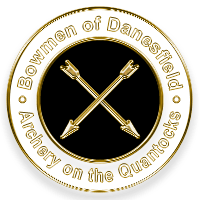It is Just a Stick
by Steve RobertsonTrainee Bowyer
When, earlier this year, I thought about trying archery, I did not think of Agincourt but of Olympic archers grouping arrows on top of each other.
So, a recurve bow with all the trimmings it was to be, and to date, that route has been relatively successful, although, I am afraid, for Olympic selection, I should have started 60 years ago!
After visiting Dunster week as a spectator, I thought I would try the other extreme – what about a longbow? Not just any longbow, but one I made myself. After investigation, I found that making one was the fastest way to get a bow since most reputable bowyers have a long waiting list.
In August, I found myself together with five other ‘trainee bowyers’ at the Weald and Downland Museum (famous as the home of the Repair Shop) for three days of instruction and hard work.
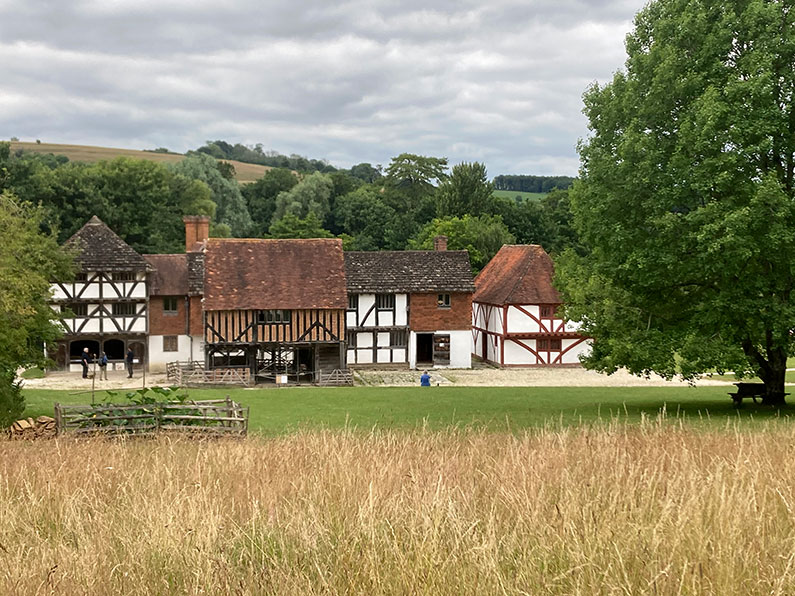
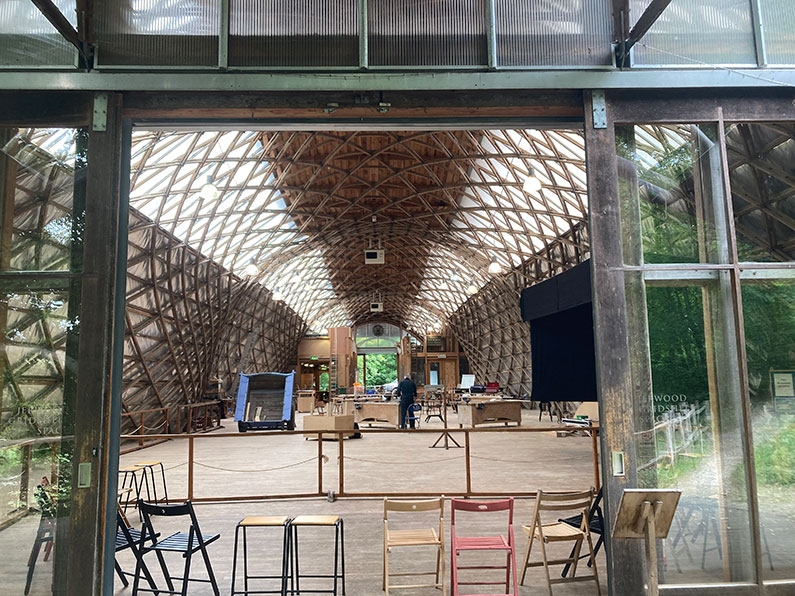
Our workshop was in the Downland Gridshell, an amazing vaulted wooden structure.
The Hickory Plank
Our instructor (ex-military) proved to be a source for a wealth of information on the longbow. For example, carpentry was supplemented by discussions on how the English developed their arrowhead design to counter the advances in French battle armour.
Our starting point was a laminated plank of hickory (face away from the archer – and under tension when the bow is drawn) and lemonwood (closest to the archer and under compression).
Day One was the use of a saw and chisel to form a rough taper on this ‘plank.’ Relatively easy to do, and not too much finesse is required.
On Day Two, we moved on to rasps and files to start forming a semi-circular profile facing the archer. Easier said than done to have a perfect taper from the bow handle to each end while at the same time having a perfect semi-circular profile.
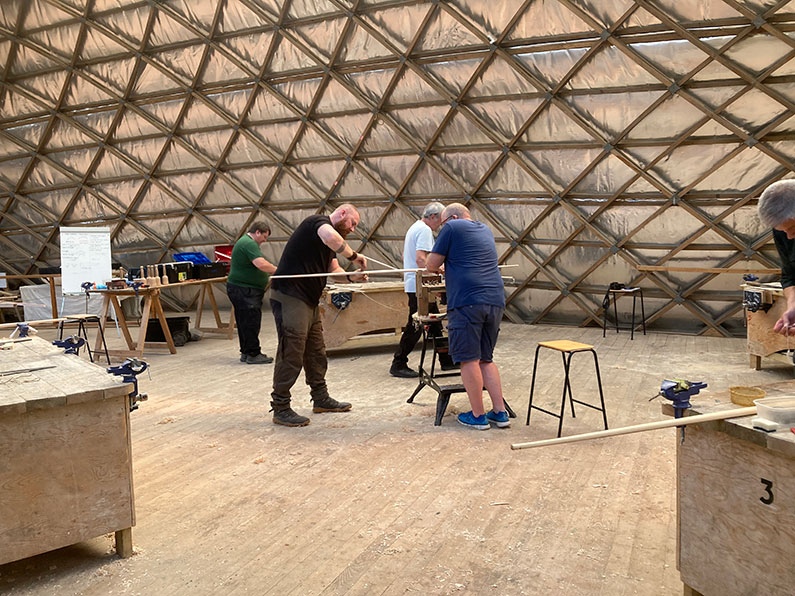
It is Just a Stick
There was a short interlude on Day Two to make bow strings from first principles and learn the correct bowyers’ knots.
The end of the day saw some of us starting to tiller our bows. This consisted of placing the bow on a jig and starting to draw it. Only a short way initially and to see if the bow formed a balanced shape when drawn. Of course it didn’t and more material had to be filed or removed with a cabinet scraper to search for a balanced draw. Take off too much material in the wrong place and there could be a major problem!
This process continued, on and on, through Day Two and continued on Day Three, steadily increasing the draw on the bow. I must admit I thought my bow looked ok at the end of Day Two but obviously to the trained eye it was far from acceptable.
At last, after three days of sweat and tears using muscles not used in Archery, or other activities, we had acceptable longbows, and it was out to shoot a few arrows to evaluate our efforts.
Back home, proud of my handiwork, I was welcomed with ‘You have spent three days? It is just a Stick.’ Hmmmh – thanks a lot.
Undeterred the next step was getting some arrows, a glove to protect my hand and a barebow tab.
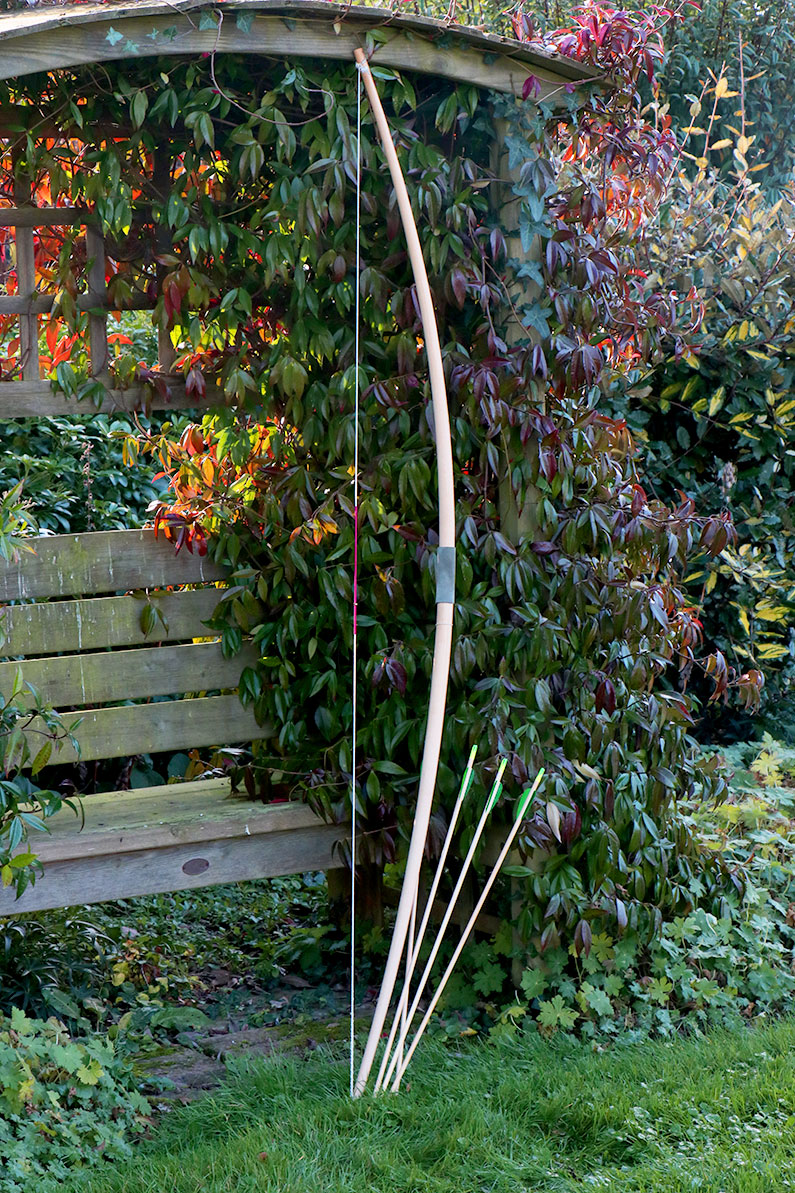
My Longbow
The bow has a poundage of about forty pounds (more than my recurve), but it needs that to launch the wooden arrows that feel like tree trunks compared to the ACC recurve ‘darts.’
The first outing was ok – 20 yards on a full-sized target seemed easy. However, increasing the distance and the lack of a consistent technique proved to be a disaster – oh, for a sight and a clicker!
What next? Back to the recurve, and when summer returns, I will try the longbow again and see if I can work it out!!
